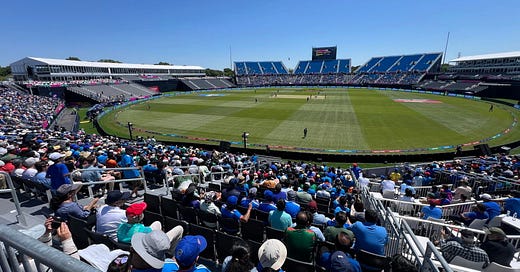Tuesday mash-up: Pitched battle for the Big Apple
Bit of cricket, bit of rugby, bit of sevens, bit of petrol, bit of McJesus, bit of... slapping!
Plug “can cricket crack America?” or variations thereof into Google and you will not be short of links.
Even Vanity Fair is on the case, under the headline Can Cricket Conquer America?
Last time cricket dominated American sporting culture, cholera was booming, Millard Fillmore was our nation’s most …
Keep reading with a 7-day free trial
Subscribe to The Bounce to keep reading this post and get 7 days of free access to the full post archives.




